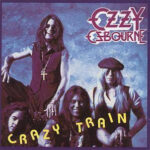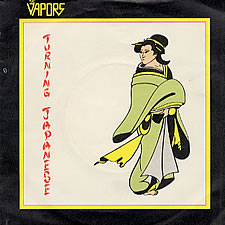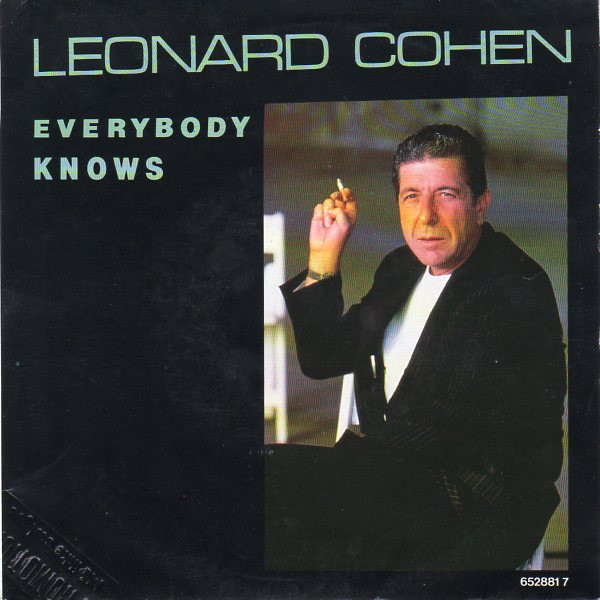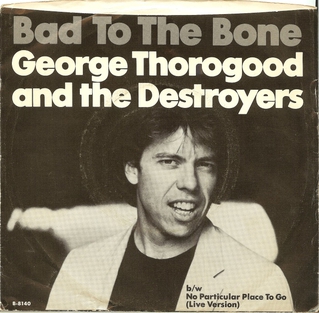 Ozzy Osbourne’s solo career skyrocketed into legendary status with the release of “Crazy Train” in 1980, a song that would become one of the most enduring anthems in heavy metal history. Featured on his debut solo album Blizzard of Ozz, “Crazy Train” was more than just a hit single—it was a statement of intent, a bold declaration that Osbourne’s artistic vision would thrive outside the confines of Black Sabbath, the band that had initially cemented his reputation as the Prince of Darkness. With its instantly recognizable guitar riff, powerful lyrics, and relentless energy, “Crazy Train” embodies the spirit of rebellion, chaos, and social commentary, while firmly establishing Osbourne as a solo icon capable of shaping the trajectory of heavy metal.
Ozzy Osbourne’s solo career skyrocketed into legendary status with the release of “Crazy Train” in 1980, a song that would become one of the most enduring anthems in heavy metal history. Featured on his debut solo album Blizzard of Ozz, “Crazy Train” was more than just a hit single—it was a statement of intent, a bold declaration that Osbourne’s artistic vision would thrive outside the confines of Black Sabbath, the band that had initially cemented his reputation as the Prince of Darkness. With its instantly recognizable guitar riff, powerful lyrics, and relentless energy, “Crazy Train” embodies the spirit of rebellion, chaos, and social commentary, while firmly establishing Osbourne as a solo icon capable of shaping the trajectory of heavy metal.
The genesis of “Crazy Train” lies in Osbourne’s collaboration with guitarist Randy Rhoads, bassist Bob Daisley, and drummer Lee Kerslake. After departing Black Sabbath in 1979, Osbourne sought to redefine himself, both musically and personally. Randy Rhoads, a classically trained virtuoso, brought a technical precision and melodic sophistication that transformed Osbourne’s sound. The band’s chemistry on “Crazy Train” is immediately evident—the rhythm section locks in tightly, Rhoads’ guitar soars with precision, and Osbourne’s vocals convey raw intensity and emotional urgency. Together, they crafted a song that balanced accessibility with technical mastery, appealing to metal aficionados and mainstream audiences alike.
The opening guitar riff of “Crazy Train” is arguably one of the most iconic in rock history. Rhoads’ performance combines precision, speed, and melodic inventiveness, creating a hook that instantly captures attention. The riff is both aggressive and memorable, setting the tone for the song’s exploration of chaos and societal critique. Its construction demonstrates Rhoads’ ability to integrate classical guitar sensibilities into heavy metal, producing a sound that is both sophisticated and visceral. The riff serves not just as a musical motif but as an auditory emblem of the song’s thematic intensity—an invitation to buckle in for a high-velocity journey through the mind of Ozzy Osbourne.
Lyrically, “Crazy Train” reflects Osbourne’s keen sense of social observation and personal reflection. Written primarily by Osbourne and Daisley, the lyrics grapple with themes of societal instability, fear, and the human propensity for self-destruction. Lines such as “I’m going off the rails on a crazy train” serve as both metaphor and manifesto, capturing the sense of living in a world that feels increasingly unhinged. The song’s lyrical content resonates on multiple levels—it is simultaneously a critique of societal chaos, a reflection of personal struggles, and a celebration of unrestrained energy. Osbourne’s delivery imbues these themes with urgency, blending vulnerability with defiance in a manner that feels both authentic and theatrically compelling.
Musically, “Crazy Train” showcases a mastery of arrangement and dynamics. Rhoads’ guitar work alternates between heavy, palm-muted riffs and soaring solos, providing contrast and maintaining listener engagement. Daisley’s bass lines anchor the harmonic structure while adding rhythmic punch, and Kerslake’s drumming propels the song with relentless drive, employing strategic fills and cymbal accents to enhance tension and release. This balance between instrumental aggression and melodic interplay allows “Crazy Train” to navigate complexity without sacrificing its accessibility, demonstrating the band’s command over both technical proficiency and audience appeal.
Osbourne’s vocal performance is central to the song’s impact. His voice combines grit, power, and theatricality, perfectly conveying the urgency of the lyrics. He navigates the verses with controlled intensity, then erupts in the chorus with a commanding presence that makes the refrain instantly singable and memorable. The contrast between the restrained verses and explosive choruses mirrors the song’s thematic exploration of chaos and control, enhancing its narrative arc and emotional resonance. Osbourne’s phrasing, tonal modulation, and dynamic control exemplify his unique ability to translate complex emotional landscapes into compelling vocal performances.
The production of “Crazy Train,” handled by Max Norman, captures the energy of the performance while emphasizing clarity and precision. The mix allows each instrument to shine, highlighting Rhoads’ guitar intricacies, the rhythm section’s solidity, and Osbourne’s vocal power. The production balances rawness with polish, retaining the immediacy of a live performance while ensuring radio-friendly fidelity. This combination of energy and clarity helped the song transcend metal’s niche audience, appealing to rock listeners across the spectrum and establishing a blueprint for subsequent heavy metal production.
Culturally, “Crazy Train” became a symbol of metal’s emergence into mainstream consciousness. At a time when heavy metal was often marginalized as niche or extreme, Osbourne’s solo debut and this track in particular demonstrated the genre’s capacity for musical sophistication, lyrical depth, and broad appeal. “Crazy Train” resonated with listeners navigating personal and societal upheaval, offering both catharsis and exhilaration. Its themes of rebellion, uncertainty, and confronting chaos reflected the zeitgeist of the early 1980s, a period marked by geopolitical tension, technological change, and generational shifts.
The song’s influence extends far beyond its initial release. Musicians across genres cite “Crazy Train” as formative, particularly Rhoads’ guitar techniques and Osbourne’s vocal stylings. Guitarists study the solo for its melodic phrasing, speed, and classical integration, while vocalists analyze Osbourne’s dynamic delivery as a model for blending power with emotional nuance. Bands from metal, hard rock, and even punk have drawn inspiration from the track’s structure, groove, and theatricality, attesting to its enduring relevance and cross-genre impact.
Live performances of “Crazy Train” amplified its mythos. Osbourne’s stage presence, combined with Rhoads’ technical wizardry and the rhythm section’s tightness, created performances that were both electrifying and immersive. The song often served as a show opener or climactic moment, energizing audiences and demonstrating the transformative power of live music. Audience interaction during choruses, particularly the iconic call-and-response of “Crazy, but that’s how it goes,” cemented the song as a communal experience, bridging performer and listener in shared exhilaration.
The song’s lyrical narrative also reflects Osbourne’s personal journey. Having faced challenges with addiction, public scrutiny, and the pressures of leaving Black Sabbath, “Crazy Train” can be interpreted as both a personal statement and a commentary on the external world. The imagery of a runaway train evokes feelings of momentum, unpredictability, and lack of control—metaphors that resonate with both individual and collective experiences of chaos. Osbourne’s ability to translate these experiences into universal themes contributes to the song’s timelessness and emotional resonance.
From a musical theory perspective, “Crazy Train” blends traditional blues-rock structures with innovative metal sensibilities. The song utilizes power chords, palm-muted riffs, and harmonic minor scales, creating tension and release that mirror the lyrical themes of instability and excitement. Rhoads’ solos incorporate classical motifs, adding melodic sophistication without alienating the rock audience. The rhythmic interplay between bass and drums establishes a driving pulse, grounding the harmonic complexity and enhancing the track’s forward momentum. This careful integration of technical elements and emotive content exemplifies the song’s craftsmanship and enduring appeal.
“Crazy Train” also occupies a unique place in pop culture. Its recognizable riff and iconic chorus have been referenced, sampled, and covered in countless media contexts—from movies and television shows to sports arenas and video games. The song functions as a shorthand for excitement, rebellion, and high-energy action, demonstrating its adaptability and cultural penetration. Its continued presence in contemporary media underscores the track’s timeless relevance and broad appeal, bridging generational gaps while retaining its original intensity.
The song’s impact on heavy metal cannot be overstated. “Crazy Train” helped establish the sonic and aesthetic blueprint for metal in the 1980s, influencing not only guitar techniques but also thematic content, vocal stylings, and production approaches. Its success demonstrated that heavy metal could combine technical sophistication with mainstream appeal, paving the way for future artists to explore complex musical ideas while achieving commercial recognition. The track’s balance of aggression, melody, and lyrical resonance continues to inform metal songwriting and performance today.
Furthermore, “Crazy Train” exemplifies the power of collaboration in shaping enduring music. Osbourne’s vision, Rhoads’ virtuosity, Daisley’s rhythmic ingenuity, and Kerslake’s percussive precision combined to create a song whose sum is greater than its parts. Each member contributed distinct musical ideas, yet the arrangement achieves cohesion, tension, and drive, reflecting a rare alignment of talent, creativity, and vision. This collaborative synergy is a key factor in the track’s lasting impact and its place as a benchmark of excellence in rock music.
The song’s legacy also lies in its ability to evoke a visceral physical and emotional response. The driving rhythm, powerful riffing, and soaring vocals create an immersive experience, engaging listeners both physically and emotionally. “Crazy Train” embodies the kinetic energy of heavy metal, offering a sense of momentum and exhilaration that mirrors the metaphorical runaway train depicted in the lyrics. This sensory impact ensures that the song remains compelling across decades and across contexts—from casual listening to live performance to cinematic use.
Decades after its release, “Crazy Train” continues to resonate with audiences, demonstrating the enduring power of Osbourne’s artistry. It serves as a touchstone for both fans and musicians, representing the synthesis of technical skill, emotional depth, and cultural commentary that defines classic heavy metal. The song’s infectious energy, memorable riffs, and thematic relevance ensure its place not only in rock history but also in the collective consciousness of music lovers worldwide.
Ultimately, “Crazy Train” is more than a song; it is a declaration of identity, a cultural statement, and a testament to the transformative power of music. Its combination of masterful instrumentation, dynamic vocals, compelling lyrics, and enduring energy positions it as one of the most influential and beloved tracks in heavy metal history. Ozzy Osbourne, through this iconic anthem, cemented his legacy as a solo artist capable of transcending his past while shaping the future of a genre that continues to thrive decades later.
“Crazy Train” exemplifies the intersection of artistry, technical mastery, and cultural resonance. Its opening riff remains instantly recognizable, its lyrical themes continue to provoke reflection, and its live performances still electrify audiences worldwide. The song captures the essence of Ozzy Osbourne’s artistic vision: chaotic yet controlled, rebellious yet accessible, and unrelentingly compelling. Its influence on musicians, fans, and popular culture ensures that “Crazy Train” will remain an emblem of heavy metal’s power, energy, and enduring appeal for generations to come.


